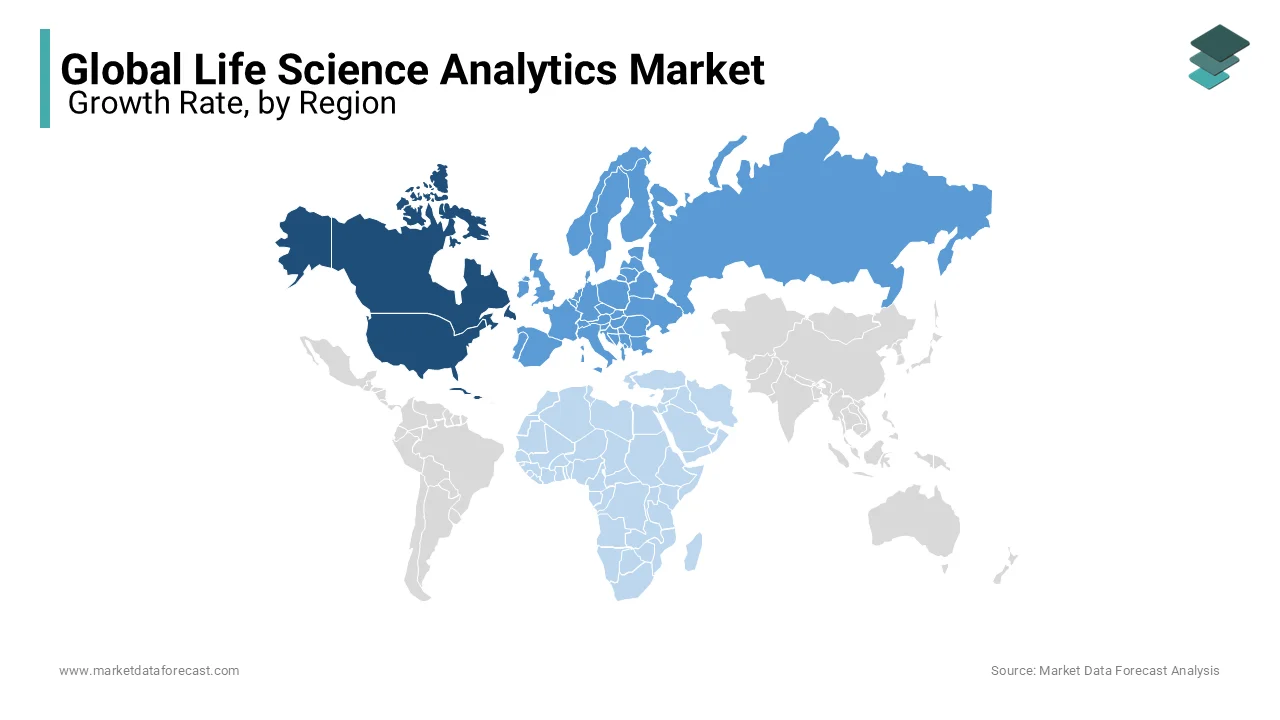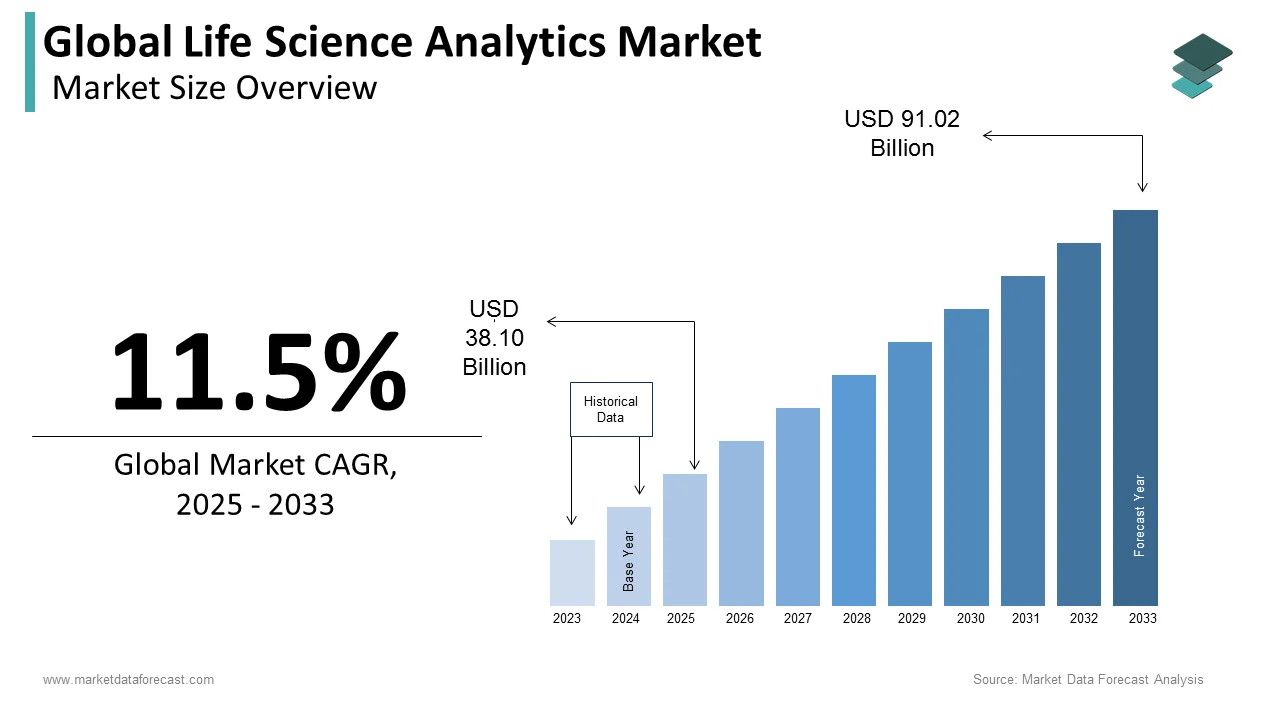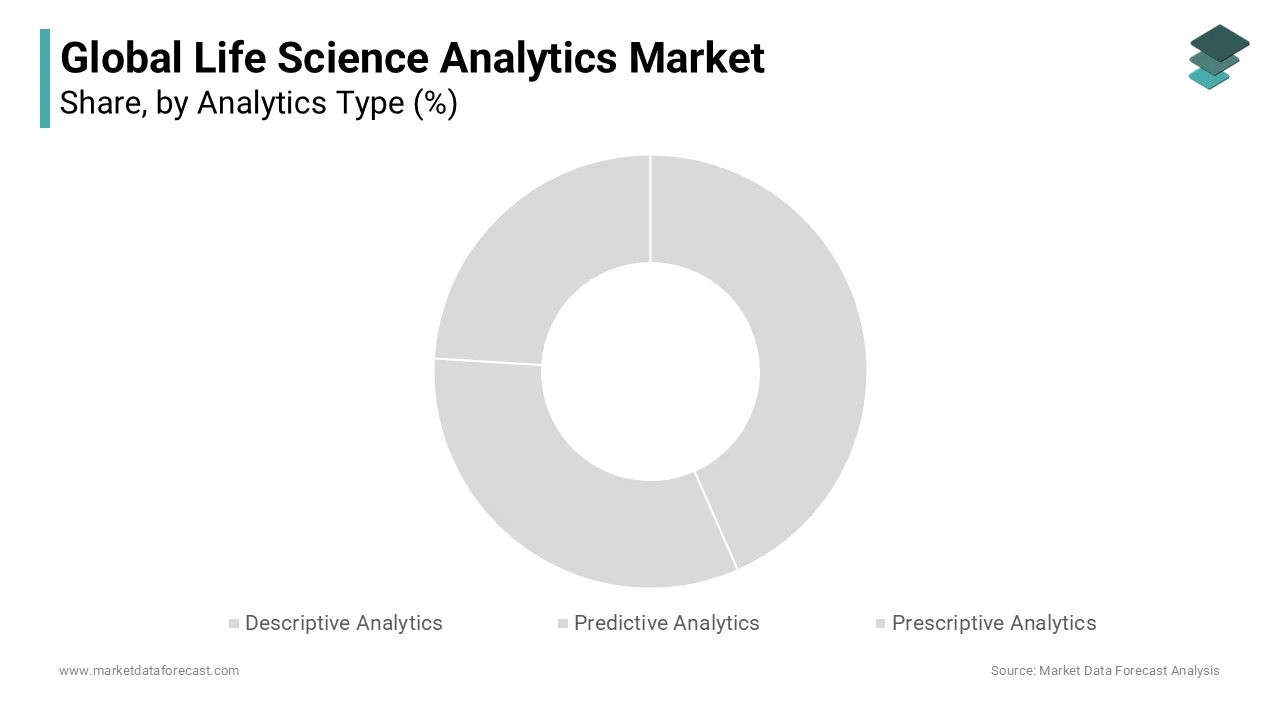Global Life Science Analytics Market Size, Share, Trends & Growth Forecast Report By Analytics Type (Descriptive, Predictive and Prescriptive), Component (Software and Services), Delivery Mode, Application, End-Users, and Region (North America, Europe, Asia-Pacific, Latin America, Middle East and Africa), Industry Analysis From 2025 To 2033.
Global Life Science Analytics Market Size
The size of the global life science analytics market was worth USD 34.17 billion in 2024. The global market is anticipated to grow at a CAGR of 11.5% from 2025 to 2033 and be worth USD 91.02 billion by 2033 from USD 38.10 billion in 2025.
MARKET DRIVERS
The growing demand for real-time data analysis and improved decision-making in the healthcare and pharmaceutical industries primarily drives the growth of the life science analytics market.
In addition, increasing data volume by medical devices and electronic health records (EHR) is expected to favor market growth. Furthermore, the growing adoption of technological developments such as machine learning and big data is further fuelling the growth rate of the life science analytics market.
MARKET RESTRAINTS
The primary factor restraining the life science analytics market expansion is the high cost of implementation and subscription fees for advanced analytical solutions, which is expected to limit the market growth.
Due to high-cost issues, small and medium pharmaceutical and biotech companies and CROs with limited resources need help affording these solutions. Another factor hampering the market growth is data security and privacy issues. As the patient information is stored in the electronic database, there is a greater risk of data breaches and leakage of sensitive patient information to unauthorized individuals due to the exchange of databases between research institutions, CROs, and software organizations. In the case of analytics, the availability of vast data from various sources, ranging in formats and quality levels, makes it challenging to streamline the data, which hampers market expansion. The R&D and the regulatory changes are challenging for the life sciences and pharmaceutical organizations. According to the Affordable Care Act, regulatory work in the USA is evolving where it requires inspection, and reimbursement depends on health outcomes.
REPORT COVERAGE
|
REPORT METRIC |
DETAILS |
|
Market Size Available |
2024 to 2033 |
|
Base Year |
2024 |
|
Forecast Period |
2025 to 2033 |
|
Segments Covered |
By Analytics Type, Component, Delivery Mode, Application, End-User, Region |
|
Various Analyses Covered |
Global, Regional & Country Level Analysis, Segment-Level Analysis; DROC, PESTLE Analysis; Porter's Five Forces Analysis, Competitive Landscape; Analyst Overview of Investment Opportunities |
|
Regions Covered |
North America, Europe, APAC, Latin America, Middle East & Africa |
|
Market Leaders Profiled |
SAS Institute Inc., IBM Corporation, Oracle Corporation, Quintiles, Inc., Accenture, Cognizant, Wipro Limited, TAKE Solutions, MaxisIT, Inc. and SCIO Health Analytics. |
SEGMENTAL ANALYSIS
Life Science Analytics Market By Analytics Type
Based on analytics type, the descriptive analytics segment is anticipated to account for a significant share of the global market during the forecast period. Furthermore, it is likely to grow at a high pace during the forecast period due to the factors such as increasing adoption of descriptive analytics by life stakeholders to analyze past trends and events occurring in real-time in life science to develop strategies to boost the revenues of their companies.
However, the predictive analytics segment is also expected to show significant growth during the forecast period due to the growing interest in adopting life science analytics to predict future outcomes and be prepared for multiple consequences.
Life Science Analytics Market By Component
Based on components, the services segment dominated the market in 2024, and the segment’s domination is estimated to continue during the forecast period. The segment's growth is majorly driven by the growing adoption of outsourcing and third-party providers for the services of life science analytics due to a lack of resources. In addition, the growing awareness among the market participants regarding the advantages associated with availing services from third-party service providers, such as specialized skills, the latest technologies, and cost-effectiveness, is fuelling the segment’s growth rate.
On the other hand, the software segment is anticipated to register the fastest CAGR during the forecast period due to the growing adoption of technological developments, the preference for remote and home healthcare solutions, and the adoption of IT solutions in healthcare.
Life Science Analytics Market By Delivery Mode
Due to the growing preference for cloud and web-based systems, the on-demand delivery system is expected to dominate the market during the forecast period.
The on-premises segment is also expected to grow. However, it is likely to rise slower than the on-demand segment as the continuous demand for life science analytics is yet to spread.
Life Science Analytics Market By Application
Based on application, the sales & marketing segment is forecasted to dominate the global life science analytics market during the forecast period. It is also anticipated to grow at the highest CAGR owing to the growing demand for post-marketing surveillance and the rising adoption rate of analytics in life science companies to boost sales & organize marketing campaigns.
However, the R&D segment is also expected to showcase a healthy CAGR in the coming years, owing to increasing research funding. In addition, the application of life science analytics in drug discovery and clinical trial management, along with the creation of new products by key market players, is supporting growth of the research segment.
Life Science Analytics Market - By End-User
Based on end-user, the pharmaceutical & biotechnology companies segment held the major share of the global life science analytics market in 2022 and is predicted to witness a healthy CAGR during the forecast period owing to the growing adoption of analytics solutions by the major market companies and new entrants.
However, the biomedical research centers segment is also expected to showcase a notable CAGR during the forecast period due to growing interest in research and development by key market players and finding from numerous sources.
REGIONAL ANALYSIS

Regionally, the North American market is predicted to dominate the global life science analytics market, followed by Europe during the forecast period. The domination of the North American region in the global market has continued for the last several years. The presence of key market participants and the growing adoption of new analytics techniques favor regional market growth. In addition, the growing aging population and the presence of many pharmaceutical and medical device manufacturers and biotechnology companies are propelling the growth rate of the North American life science analytics market. The U.S. had the leading share of the North American market in 2024, followed by Canada. The rising focus to develop a data-driven healthcare system in the U.S. by the U.S. government is one of the major factors fuelling the market growth in the U.S. Furthermore, the growing adoption of personalized medicine in the U.S., which primarily depends on data analytics is promoting the U.S. life science analytics market growth.
The Europe life science analytics market had a substantial share of the worldwide market in 2022 and is anticipated to register a healthy CAGR during the forecast period. The UK, Germany, Spain, Russia, and Italy are predicted to occupy leading share of the European market during the forecast period.
The life science analytics market in Asia Pacific is projected to expected to register fastest CAGR during the forecast period. The growth of the APAC market is primarily driven by the increasing incidence of chronic diseases, expanding life science industry, the growing adoption of advanced technologies, and the growing efforts from the key market participant to capture the potential of developing countries of the APAC market.
The life science analytics market in Latin America is anticipated to grow at a healthy CAGR during the forecast period.
The MEA life science analytics market is predicted to hold a moderate share of the worldwide market during the forecast period.
KEY MARKET PLAYERS
Some of the notable companies dominating the global life science analytics market profiled in this report are SAS Institute Inc., IBM Corporation, Oracle Corporation, Quintiles, Inc., Accenture, Cognizant, Wipro Limited, TAKE Solutions, MaxisIT, Inc. and SCIO Health Analytics.
RECENT HAPPENINGS IN THIS MARKET
In March 2020, Infosys and IBM formed a collaboration to assist enterprises of various industries including financial services, insurance and healthcare boost their digital transformation using IBM public cloud.
DETAILED SEGMENTATION OF THE GLOBAL LIFE SCIENCE ANALYTICS MARKET INCLUDED IN THIS REPORT
This research report on the global life science analytics market has been segmented and sub-segmented based on the analytics type, component, delivery mode, application, end-user, and region.
By Analytics Type
- Descriptive Analytics
- Predictive Analytics
- Prescriptive Analytics
By Component
- Software
- Services
By Delivery Mode
- On-demand
- On-premises
By Application
- Clinical and Preclinical Trials
- Research and Development
- Regulatory Compliance
- Sales and Marketing
- Supply Chain Management
- Pharmacovigilance
By End-User
- Pharmaceutical and Biotechnology Companies
- Medical Device Companies
- Biomedical Research Centers
- Third-party Administrators (TPA)
By Region
- North America
- Europe
- Asia Pacific
- Latin America
- The Middle East and Africa
Frequently Asked Questions
How much was the global life science analytics market worth in 2024?
The global life science analytics market size was valued at USD 34.17 billion in 2024.
Does this report include the impact of COVID-19 on the life science analytics market?
Yes, we have studied and included the COVID-19 impact on the global life science analytics market in this report.
Which segment by analytics held the significant share in the life science analytics market?
The descriptive analytics segment had the major share in the life science analytics market in 2024.
Which are the major players operating in the life science analytics market?
SAS Institute Inc., IBM Corporation, Oracle Corporation, Quintiles, Inc., Accenture, Cognizant, Wipro Limited, TAKE Solutions, MaxisIT, Inc. and SCIO Health Analytics are a few of the notable players in the life science analytics market.
Related Reports
Access the study in MULTIPLE FORMATS
Purchase options starting from
$ 2500
Didn’t find what you’re looking for?
TALK TO OUR ANALYST TEAM
Need something within your budget?
NO WORRIES! WE GOT YOU COVERED!
Call us on: +1 888 702 9696 (U.S Toll Free)
Write to us: sales@marketdataforecast.com


